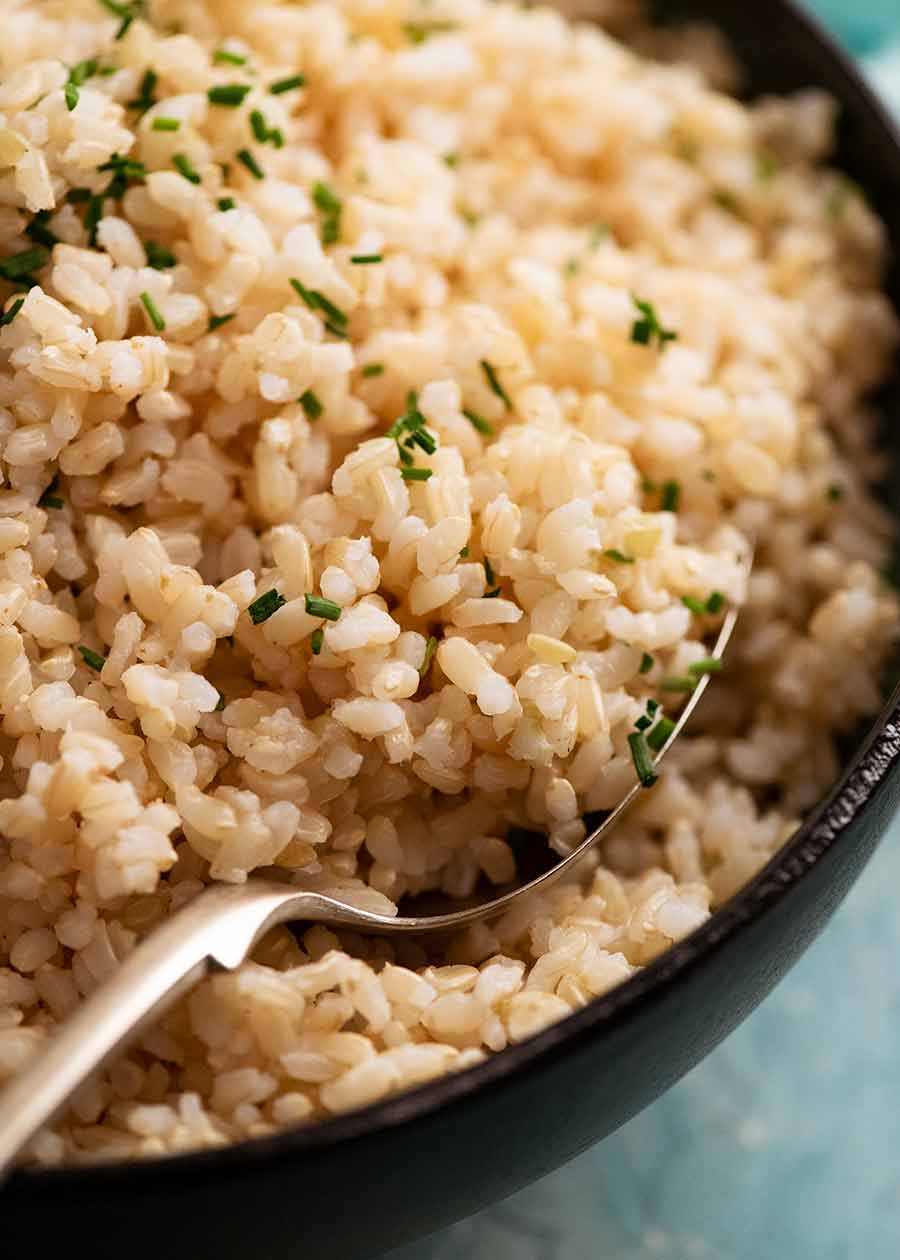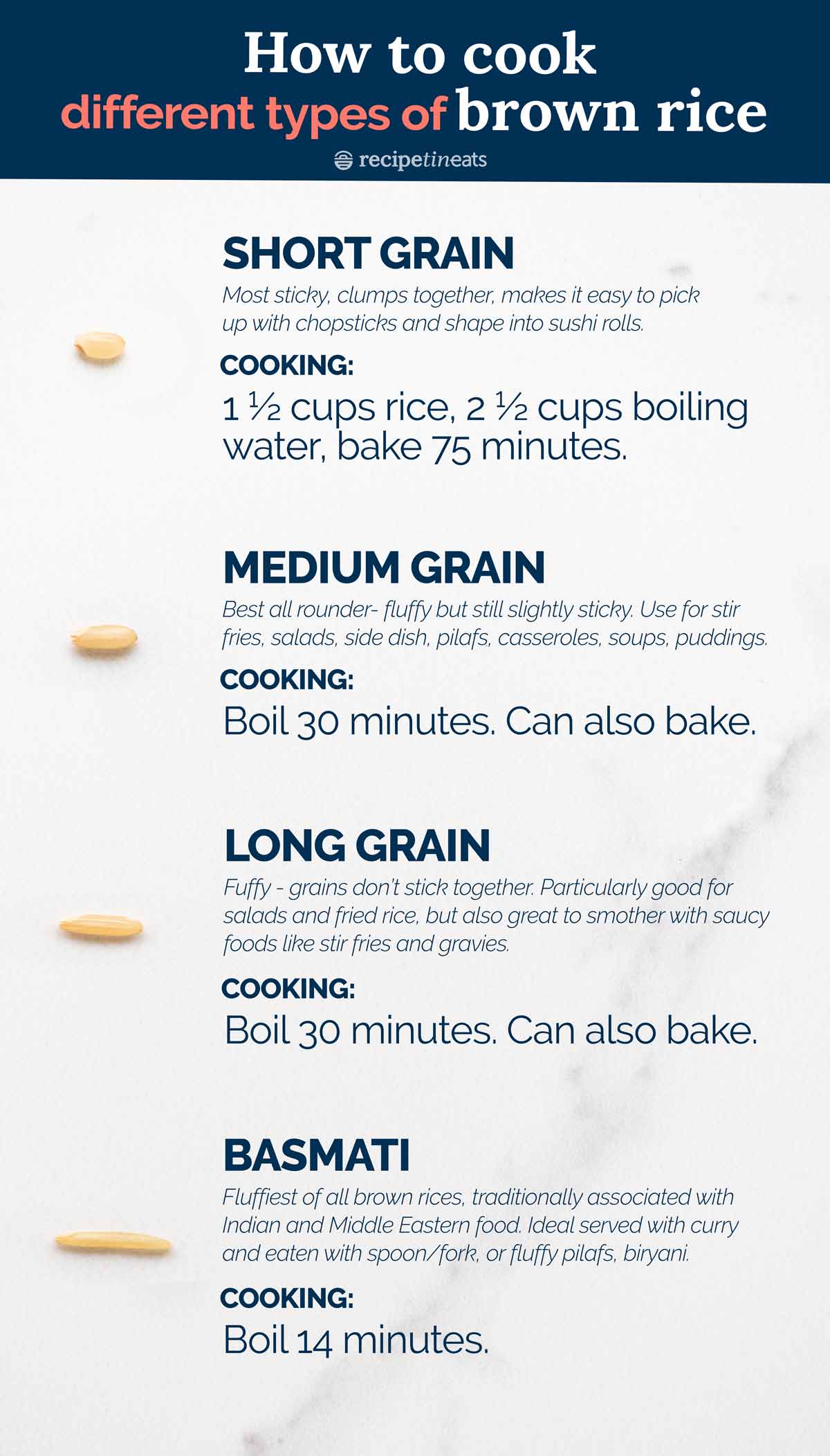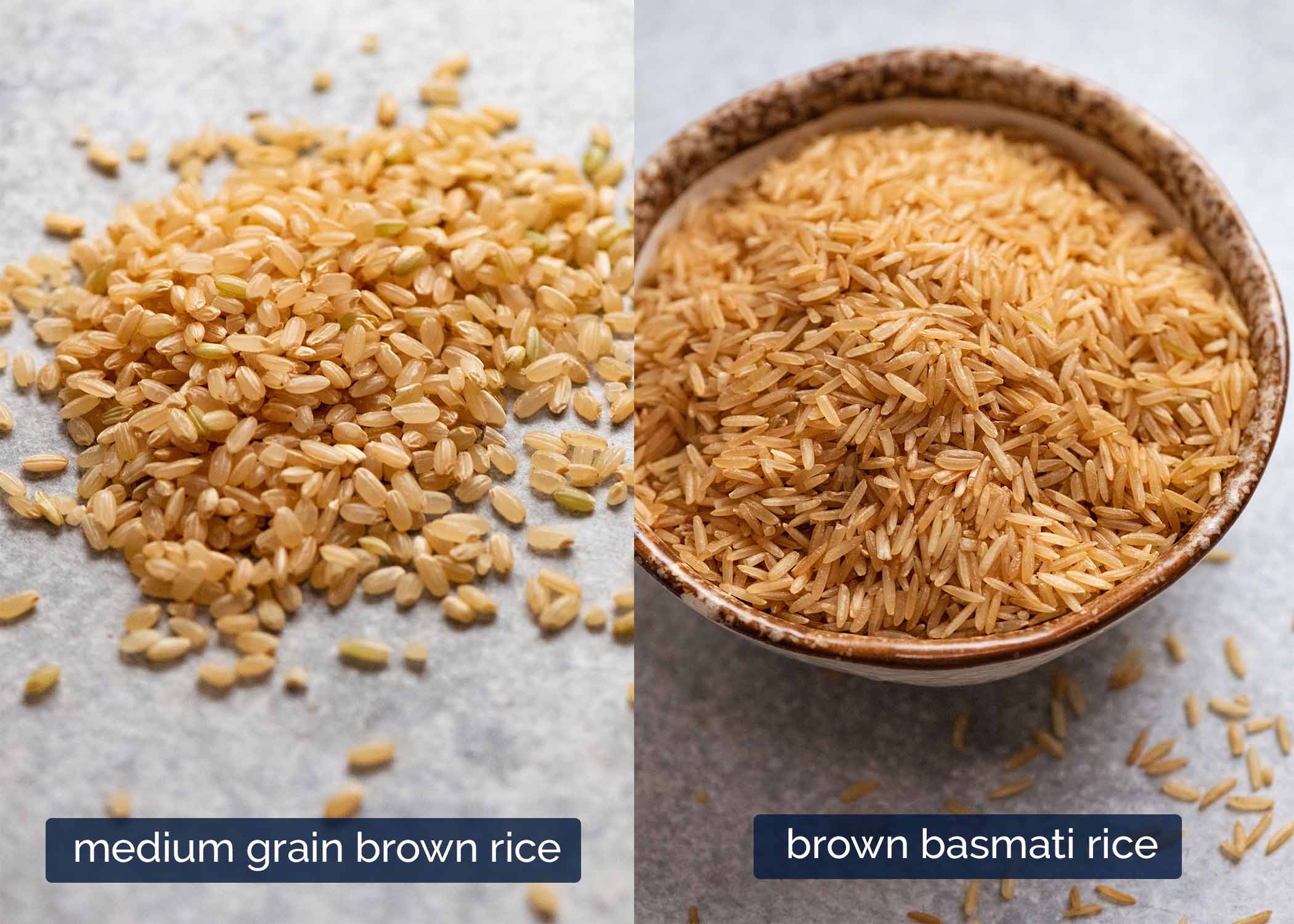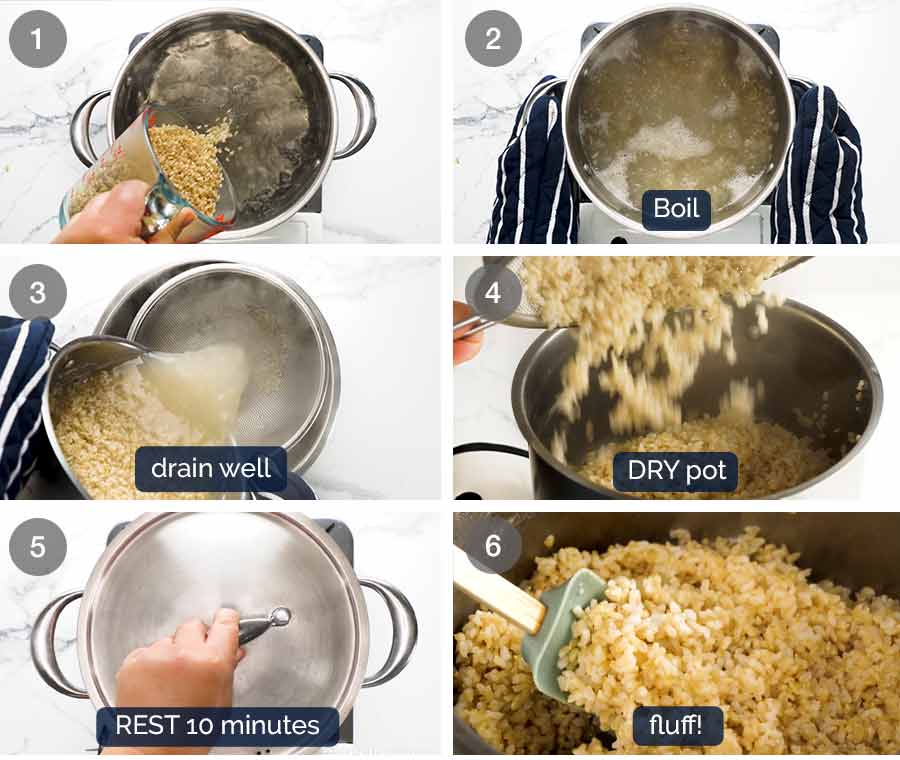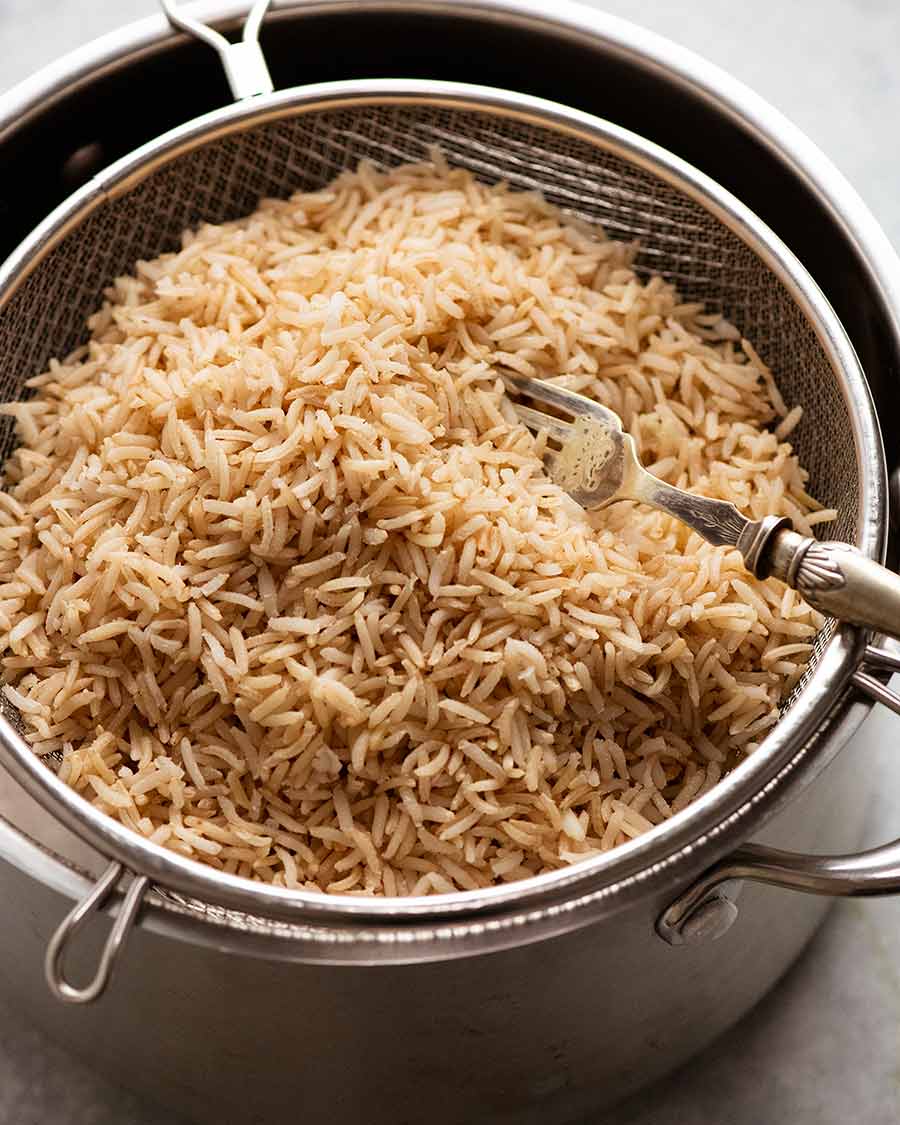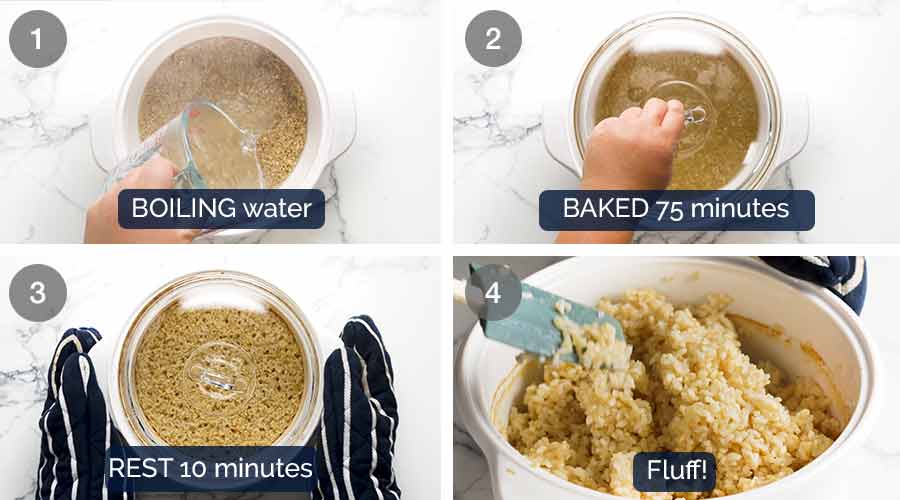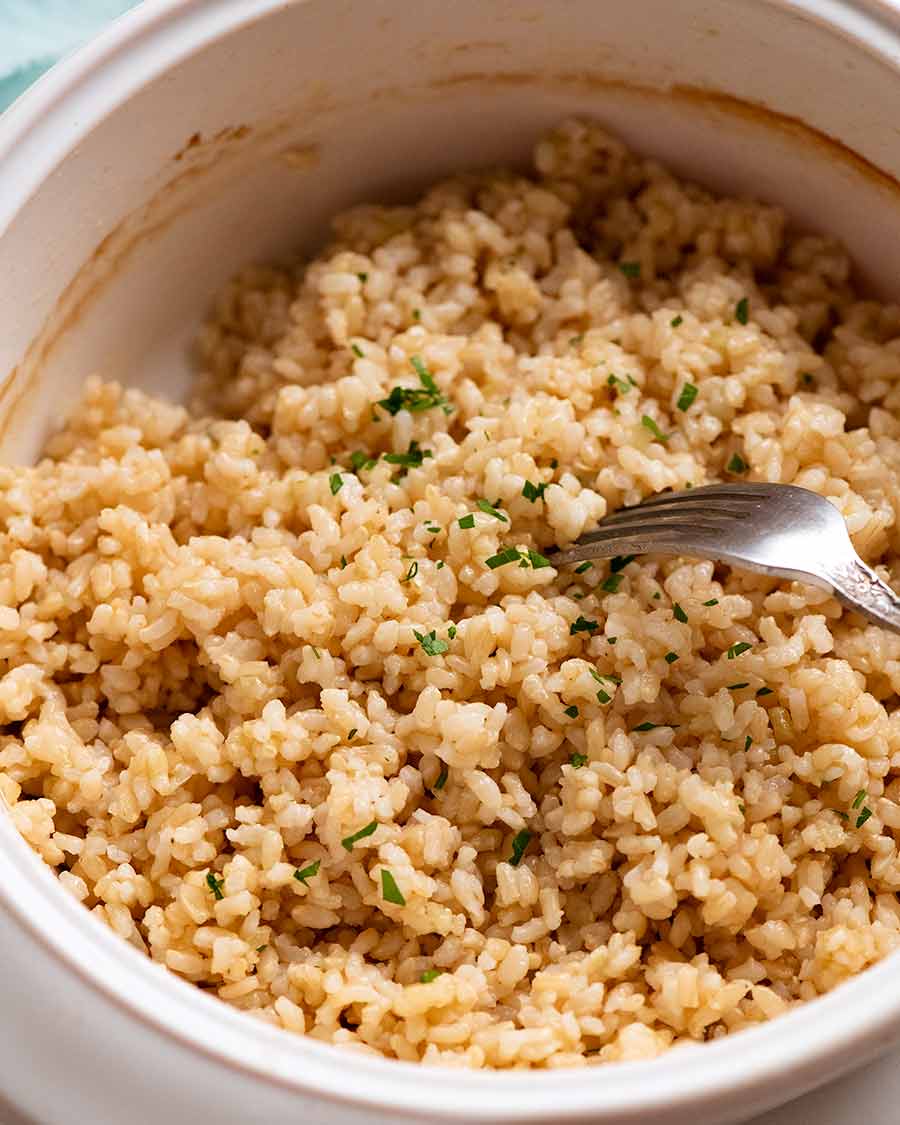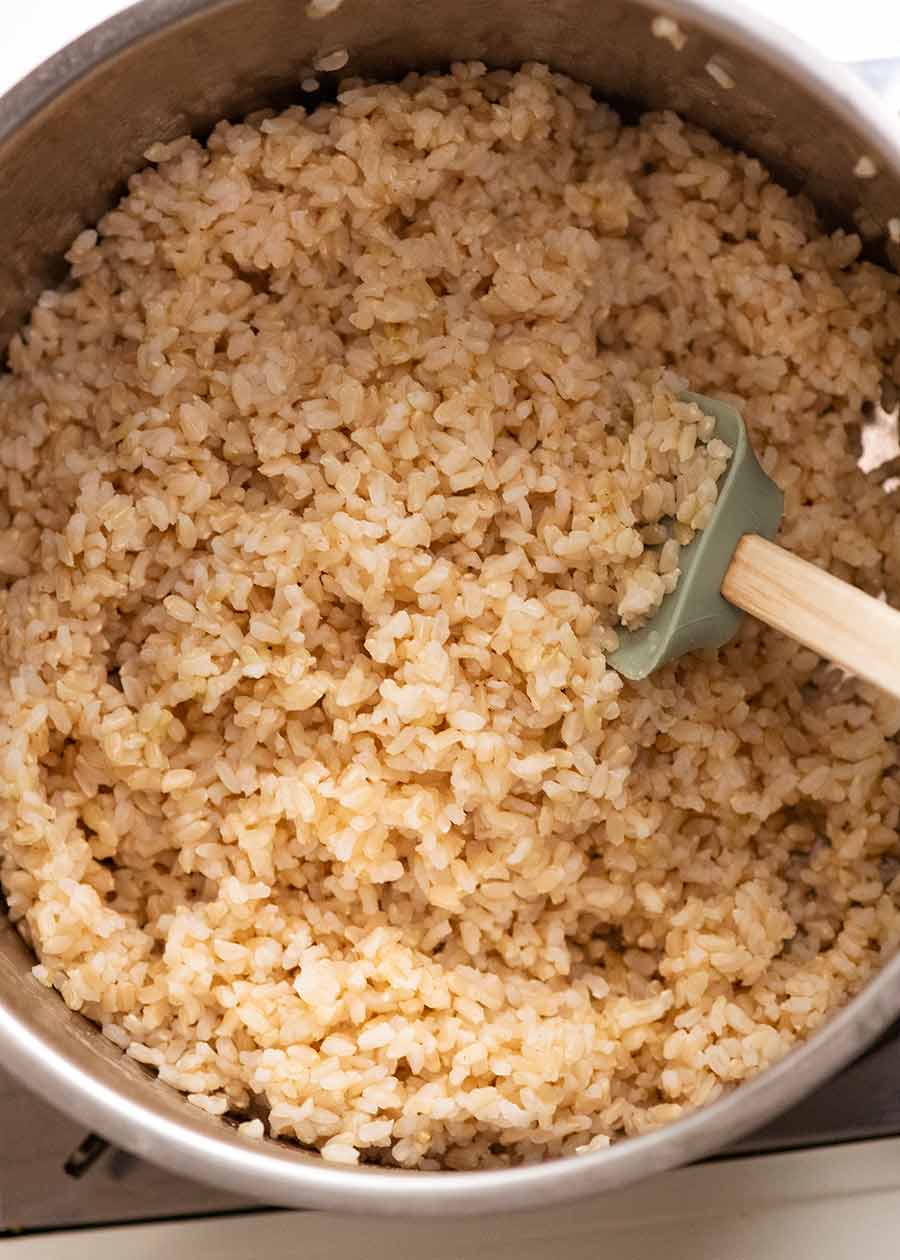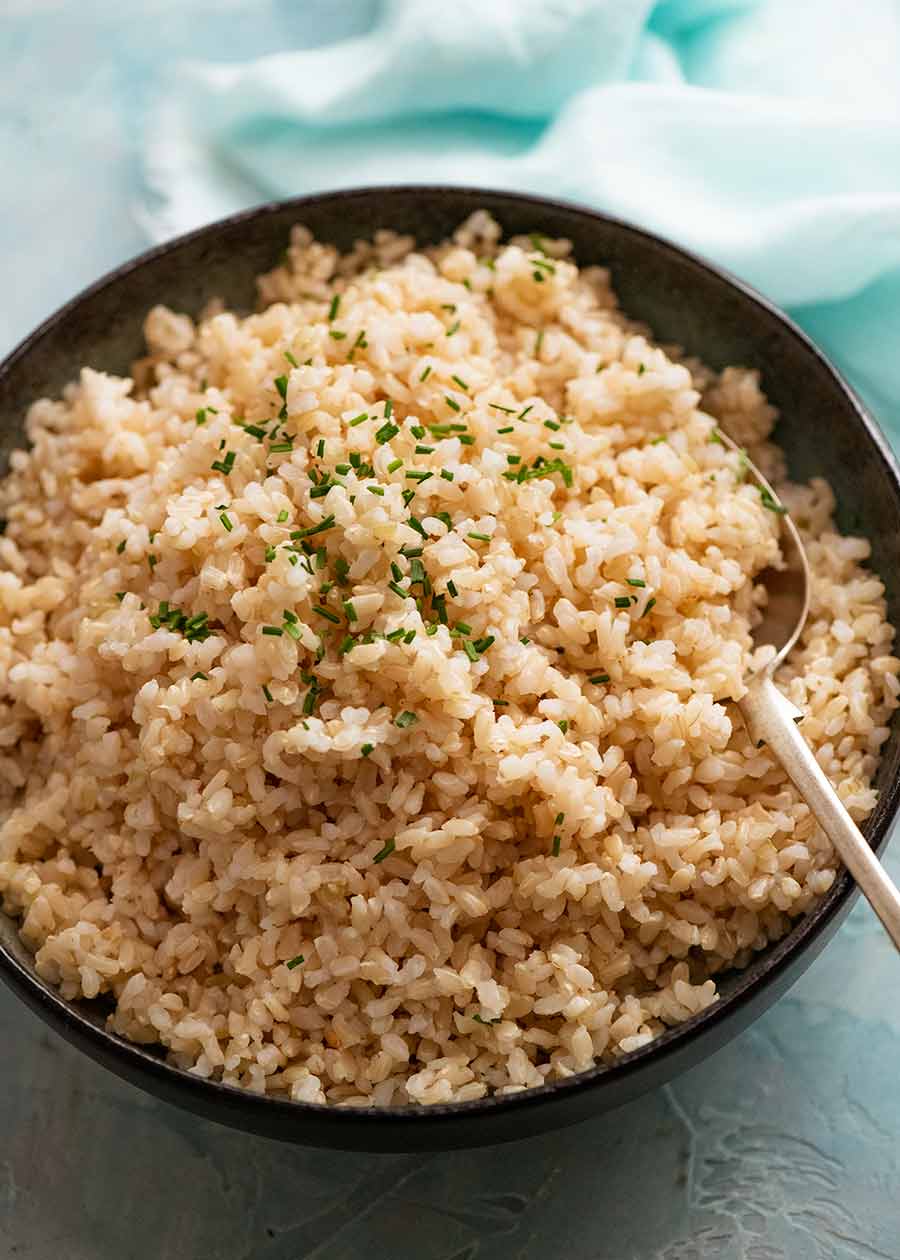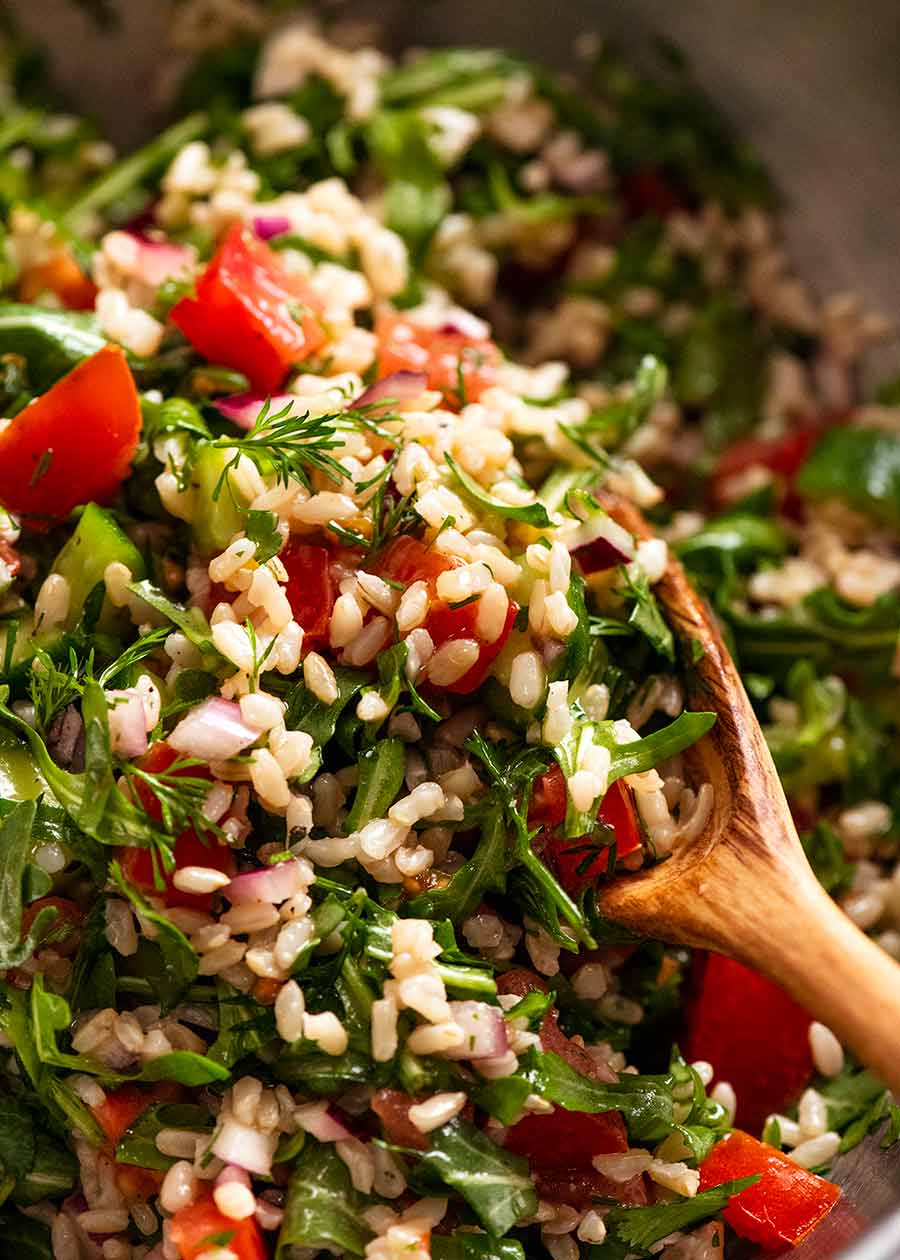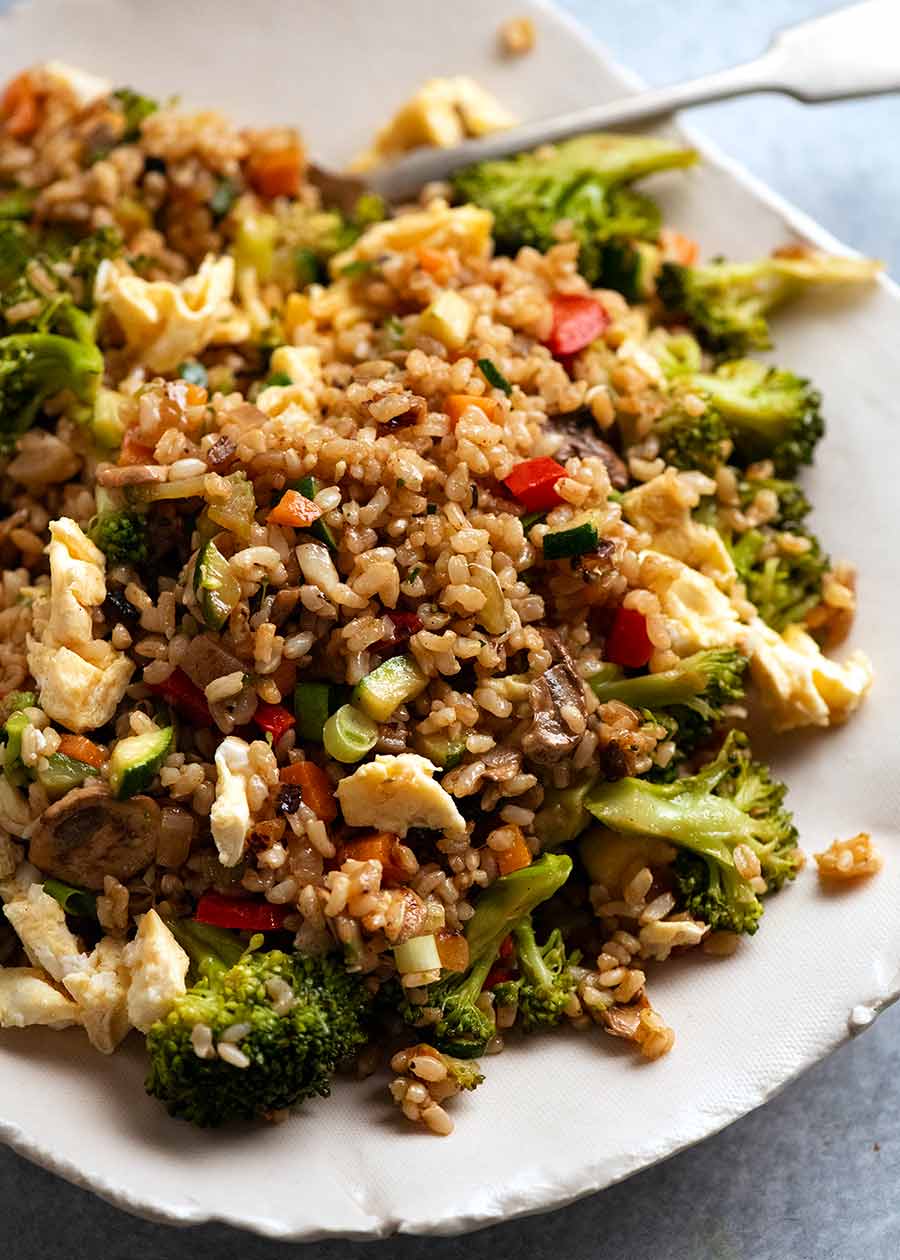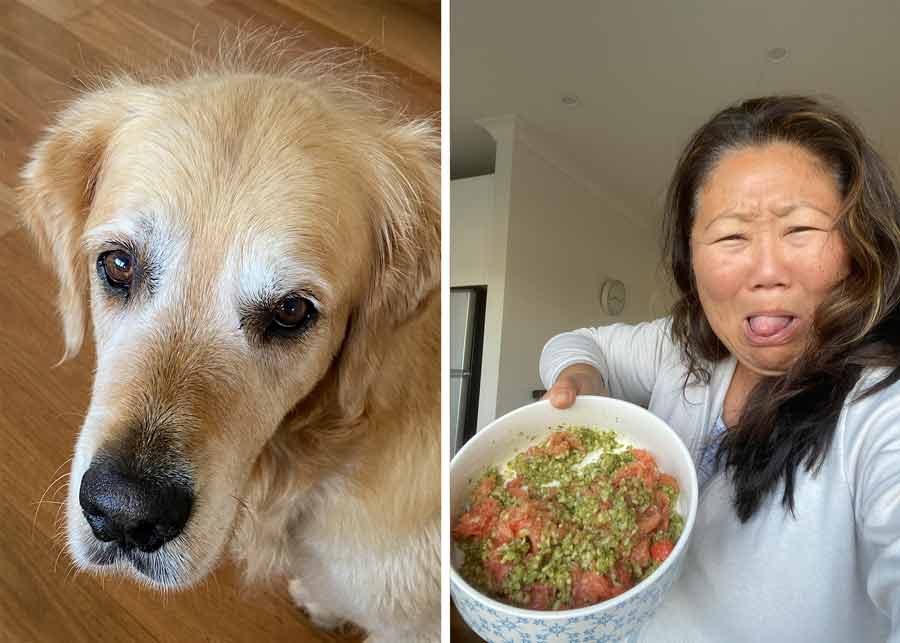BIGGEST TIP – ignore the packet directions, DO NOT use the absorption method. And make this Brown Rice Salad!
How to cook brown rice (perfectly)
This is a recipe for how to cook brown rice so it’s fluffy and tumbles out of the pot like THIS ↓↓ White rice | Jasmine | Basmati | Sushi rice | Risotto (easy way!) | Paella | Quinoa | Cauliflower rice The challenge with cooking brown rice is that it has a harder hull than white rice, being the nutritious bran layer than is left on during milling. So all too often, recipes will lead you down a path to either overcooked mushy surfaces with cooked insides, OR the surface might be perfect but the inside is still hard. The brown rice cook time varies drastically depending on what type of brown rice you have. Well, you can ignore all those other recipes you’ve used in the past. This is all you need to know about how to cook brown rice perfectly and consistently, every single time:
Using these methods, your brown rice will be….
Perfectly cooked all the way through – not overcooked and mushy, nor undercooked in the middle;Will have a perfectly cooked surface that is neither gummy/slimy, nor unpleasantly wet and soggy;Will have the slight chew that we love about brown rice, from the layer of bran that is kept on during milling – the good stuff, the flavour and nutrition!Will be beautifully fluffy – if you used medium/long grain or basmati rice; orWill be a bit sticky and clump together as intended – if you used short grain rice.
If you don’t know what type of brown rice you have, match it as best you can to the photos above.
Boil and Drain Method
Use this for: medium grain, long grain and brown basmati rice. Overview: This method is for long rice grains that cook up fluffy and separated, rather than clumping together. The rapid boiling keeps the grains agitated so they don’t stick together. This “hard and fast” boil method is ideal to cook through the tough, nutritious bran layer on the outside of brown rice. The Boil and Drain method is just like cooking pasta – with one very important difference: resting. When the rice is drained, you will notice the grains are unpleasantly soggy. When you return it to the pot and leave it covered for 10 minutes, the grains will absorb the excess water and transform into fluffy perfection!
Boiling times:
30 minutes – medium grain and long grain brown rice12 – 14 minutes – brown basmati rice
This is brown basmati rice that’s been cooked using the Boil and Drain method: Also, make sure to put the pot back on the turned off stove while the rice is resting. That extra little bit of residual heat will help the rice “steam dry” to perfection.
Baking Method
Use this for: short grain. Also very good for medium grain and long grain (though Boil and Drain is better for these). Overview: Excellent entirely hands off method to evenly cook through brown rice. Marginal bits of crispy brown rice on the rim of the surface, but it doesn’t bother me in the slightest. (In fact, I want to pick them off for myself!) This massively overlooked method of baking rice is ideal because the baking vessel is not in direct contact with the heating element (like with stovetop cooking) so you don’t have to worry about a scorched base, and the long, slow 75 minute cook time allows for the tough outer layer of the brown rice to cook through perfectly.
NO to the Absorption Method!
The Absorption Method of cooking rice is the method whereby rice and water is put in a saucepan and cooked over low heat so the rice absorbs the water, and it is NOT drained. This is how I cook all white rice – everyday rice as well as Jasmin and Basmati. While it can work if you soak the rice for 2 hours, then cook on a low heat for 30 minutes, I concluded that it was not the best nor easiest method for brown rice because of the following Conclusion: give the absorption method a miss! Because brown rice grains have a hard nutrition hull (the bran layer which is removed for white rice). This is tougher and takes longer to cook. It is very hard to find the perfect balance using the low-heat absorption method such that the hard hull is perfectly cooked in the same time it takes for the inside cooks through. All too often, you end up overcooking the hull in order to cook the middle (ie mushy outsides), or undercooked hard inside with perfectly cooked outsides. Here’s a “successful” pot of brown rice cooked using the Absorption Method. It’s hard to tell from a photo, but these rice grains were softer and far less fluffier than using the Boil & Drain Method AND Baking Method (this is medium grain brown rice).
Different types of brown rice
Technically, any rice that doesn’t have the hull removed is a brown rice, so this includes things like red rice, black rice etc. But for the purpose of this recipe, I’m covering the four common types of brown rice (all pictured in graphic at top of post):
Short grain brown rice rice – short and stubby, this cooks up sticky so the grains clump together, making it ideal to pick up with chopsticks and use for things like sushi where you want the rice to stick together. This is rare in Australia, I’ve only used it a handful of times, always from speciality stores or markets. And I’ve also read that it’s common for short(ish) medium grain rice to be labelled “short grain rice”. Most sushi shops in Australia appear to use medium grain brown rice;Medium grain brown rice (below left) – slightly longer than short grain, this is a great all rounder that is slightly stickier than long grain, but not as sticky as short grain (just sticky enough to make sushi rolls). Most common rice type in Australia;Long grain – longer still, cooks up fluffy and doesn’t stick together as much (though it still does a bit). Ideal for salads (think – tossing with dressing); andBasmati (below right) – the least sticky of them all! Traditionally from the Indian sub-continent so ideal with all things curry as well as Middle Eastern foods.
When used cooked – like serving with stir fries, or in rice salads and rice soups – the type of brown rice doesn’t really matter except for things like sushi when the rice needs to stick together (use short grain). However, it does matter when uncooked rice is used in a recipe because the cook time and liquid amounts required depends on the type of brown rice used. The recipe author should (hopefully!) specify which type of rice to use.
What to make with brown rice
Ahh, the possibilities in your newfound perfectly-cooked-brown-rice life!! To smother in stir fries, make fried rice, rice salads (this one or this fabulous new one), and the hundreds of recipes on my website that end with the words “serve with rice”. I am in Australia and I typically use SunRice (Australia’s largest rice producer) which is a very good quality for everyday purposes. Basically, anytime a recipe calls for using or serving with cooked white rice, switch it out with brown rice for the added health benefits and flavour! PRO TIP: Fried rice is excellent made with brown rice because the grains are a little firmer than white rice so you don’t even need to refrigerate overnight! I have quite a few for you to choose from:
FRIED RICE RECIPES to make using brown rice
Also, if you clicked on the brown rice testing matrix and are wondering what on earth I did with all that rice (especially the many batches of mushy rice!), it just so happens that Dozer’s homemade dog food includes soft cooked brown rice so it all went to him! That’s why I didn’t mind experimenting – because I knew none would go to waste. As a child, we were scolded for leaving a single grain of rice in my bowl. “A rice farmer picked that with his bare hands!” my mother would tell us, guilting us into respecting every grain of rice. I do think that even back then, the farmers had a little help from machinery. 😂 But it was still a lesson well learned! – Nagi
Watch how to make it
More Life-Essential Rice recipes
Because nobody likes mushy rice…nobody!
Life of Dozer
I went searching for a photo of Dozer’s homemade food mix which includes soft cooked mushy brown rice (the perfect use for all the failed batches of brown rice!). This is the only one I could find – from that time I was putting his bowl together and a bit of his food flew into my mouth!! 😂 For those who are interested, here is his homemade dog food recipe, but please do not use it without consulting your own specialist or doing your own research because I am not an expert (only an expert on Dozer’s food!).
